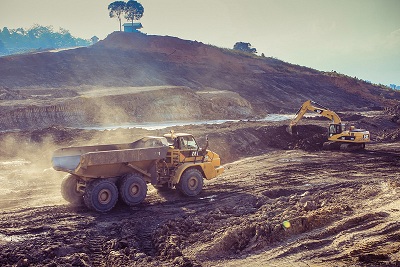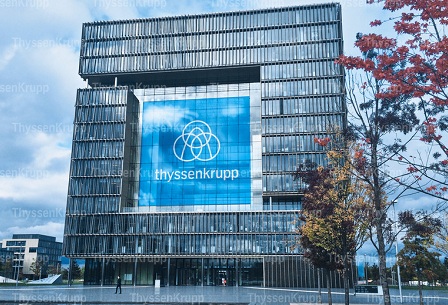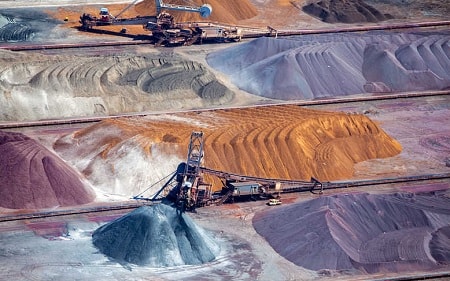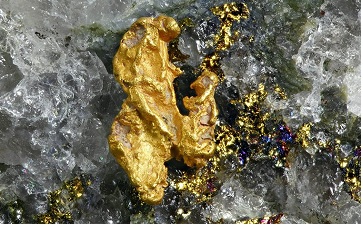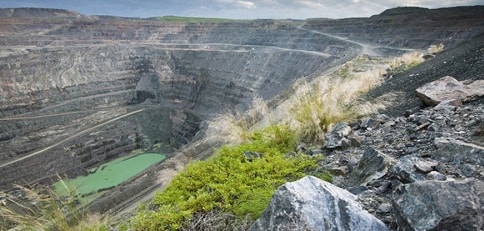Betze-Post gold mine, in Nevada, US, is the eighth deepest open-pit mine in the world. The mine is 2.2km long and 1.5km wide, with a depth of more than 500m. It is expected to be operational until 2026.
Betze-Post mine is part of the Goldstrike deposit area. The Post deposit was discovered in 1982 and the Deep Post mine was discovered in 1986.
Barrick Gold acquired the Goldstrike mine in 1986. Franco-Nevada and Royal Gold hold royalty shares in the Goldstrike property.
The Goldstrike mine comprises of the Betze-Post open-pit mine and two underground mines, namely Meikle and Rodeo.
Cyanide process is used for heap leaching the ore from all the three mines.
Betze-Post geology and mineralisation
“The Post deposit was discovered in 1982 and the Deep Post mine was discovered in 1986.”
Betze-Post is the largest gold deposit in the Carlin trend, where the Goldstrike deposit is located. The Betze-Post open pit zone is a combination of five generations of pyrite mineralisation.
Diagenetic and coarse grained pyrites are contained in the metamorphic aureole of the Goldstrike. It also consists of micro-veinlets of arsenic and gold bearing pyrite of fourth generation. The arsenian pyrite is further divided into coarsely grained sulphides at 200µm diameter.
Gold mineralisation at Betze-post is controlled by favourable stratigraphy and structural complexity. The ore zone is extended in an area of approximately 1,829m. It has a width of 183m to 244m, while the thickness varies from 122m to 183m.
The mineralisation is divided into three categories – disseminated carbonaceous mineralisation, Siliceous stibnite breccias mineralisation and Seam mineralisation.
The disseminated carbonaceous mineralisation occurs as an upper tabular zone of the Popovich Formation, consisting of high grade gold. The breccias mineralisation takes a tabular zone, and is 300ft long with 150ft thickness. It represents partially brecciated and silicified limestone structure.
The seam mineralisation is rich in realgar and orpiment substance, and occurs as dark decalcified fractures and argillaceous zones.
Mining and ore processing at the US gold mine
Betze-Post open pit mine uses truck-and-shovel method of mining using electric shovels. Mining thickness of 40ft of waste and 20ft of ore is maintained to avoid dilution.
“The Betze-Post open pit zone is a combination of five generations of pyrite mineralisation.”
The haul ramps are 120ft wide and designed to facilitate double lane traffic. The mining shovels are equipped with Neptec’s OPAL-360 scanner, for collecting real time 3D data.
The ore is processed at the doré located on the site and then transported to outside refineries for gold processing.
An autoclave circuit and a roaster are used to process the ore. The autoclave circuit treats the non-carbonaceous sulphide ore, while the roaster treats the carbonaceous ore. The two facilities have a combined capacity of 33,000t to 35,000t per day.
The circuit at the autoclave facility was converted from acidic to alkaline in August 2011. Thiosulfate processing technology is being introduced to the mine.
The leach facility conversion is expected to increase the processing capacity. It will use thiosulphate to leach the gold after pressure oxidation, rather than cyanide, and resin to collect the dissolved gold, rather than carbon. The project is expected to begin production by the third quarter of 2014.
Dewatering of the Betze-Post pit is done with the help of perimeter wells located on the pit area.
Infrastructure at Nevada’s Betze-post gold mine
Common infrastructure facilities are used for all the three mines at the Goldstrike project. An 115MW natural gas power plant is installed at the site for meeting the power requirements.




